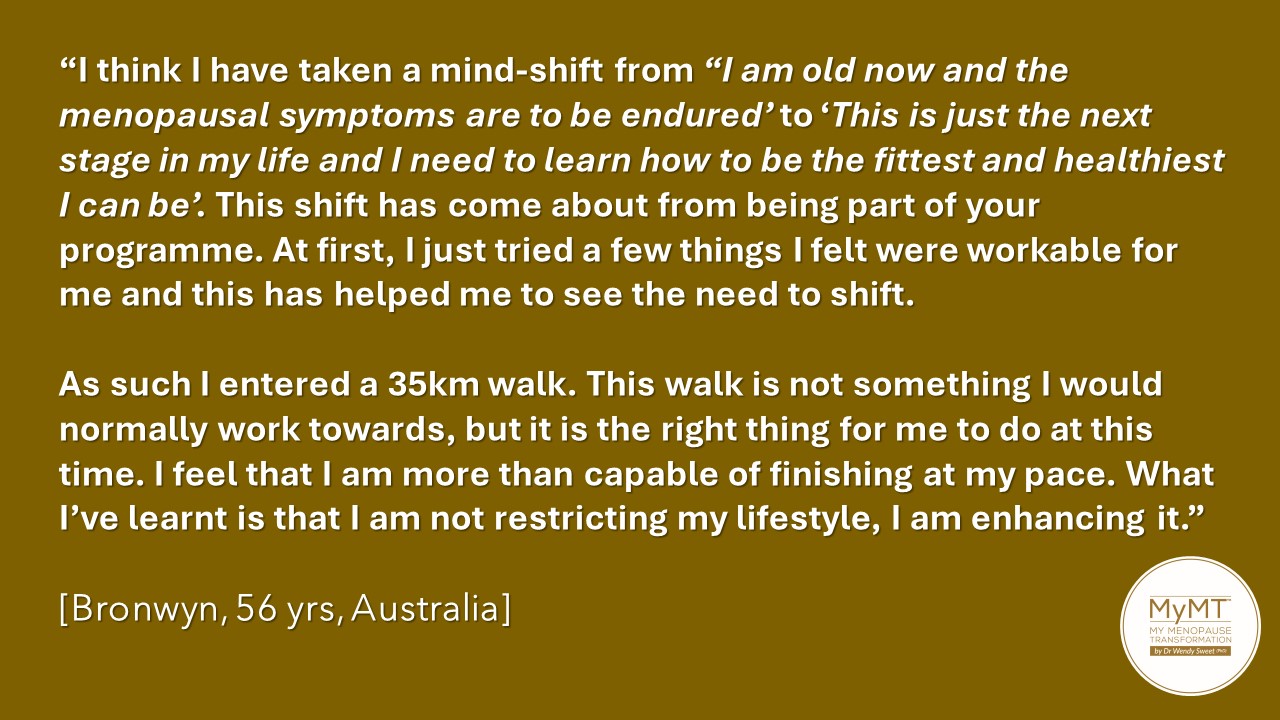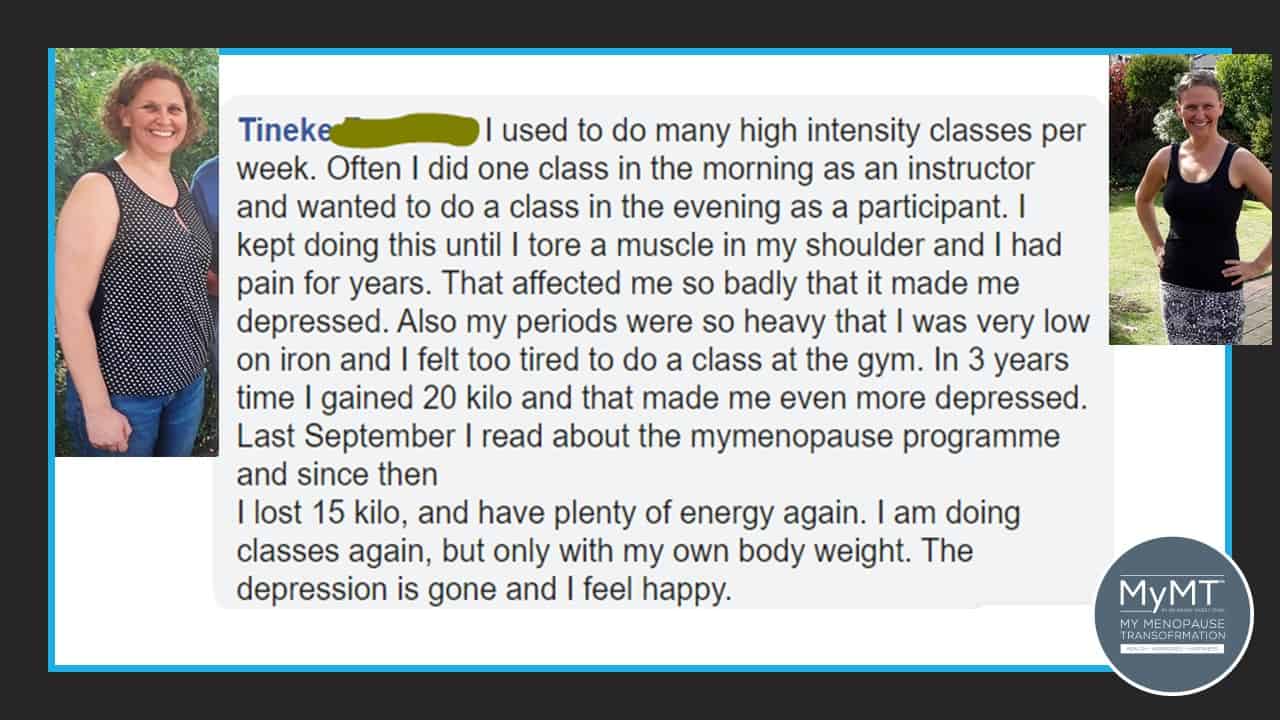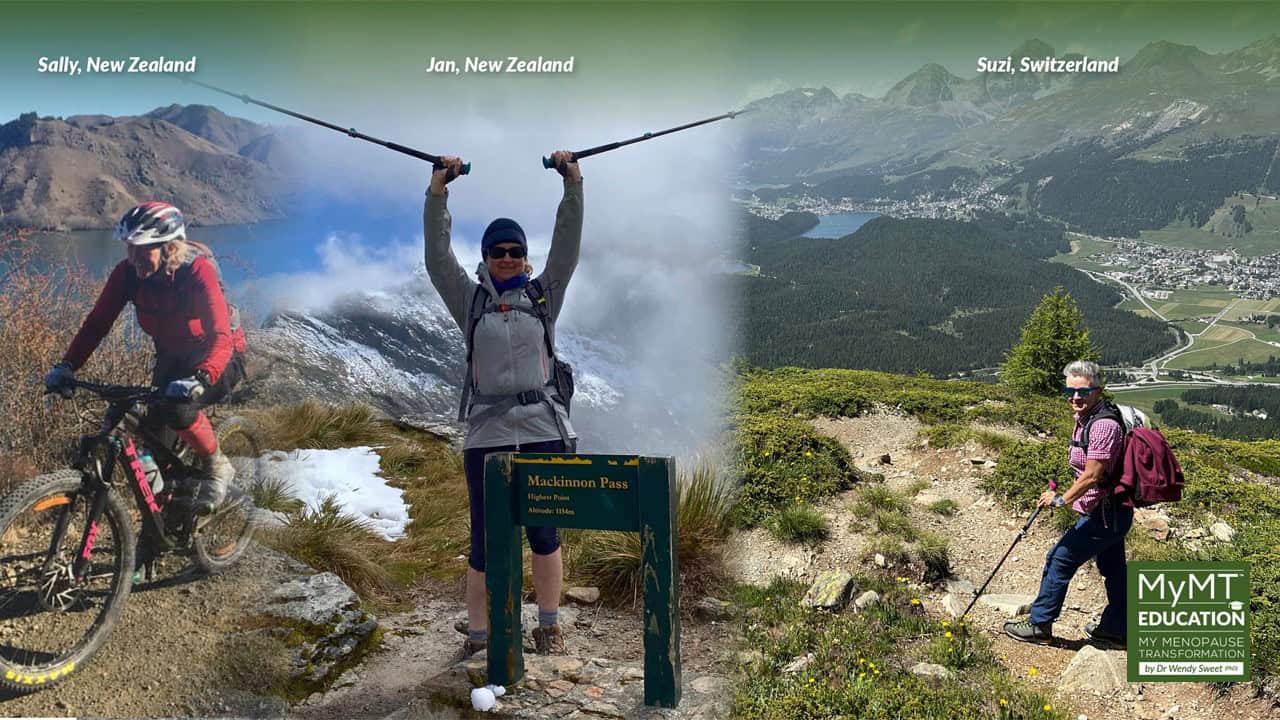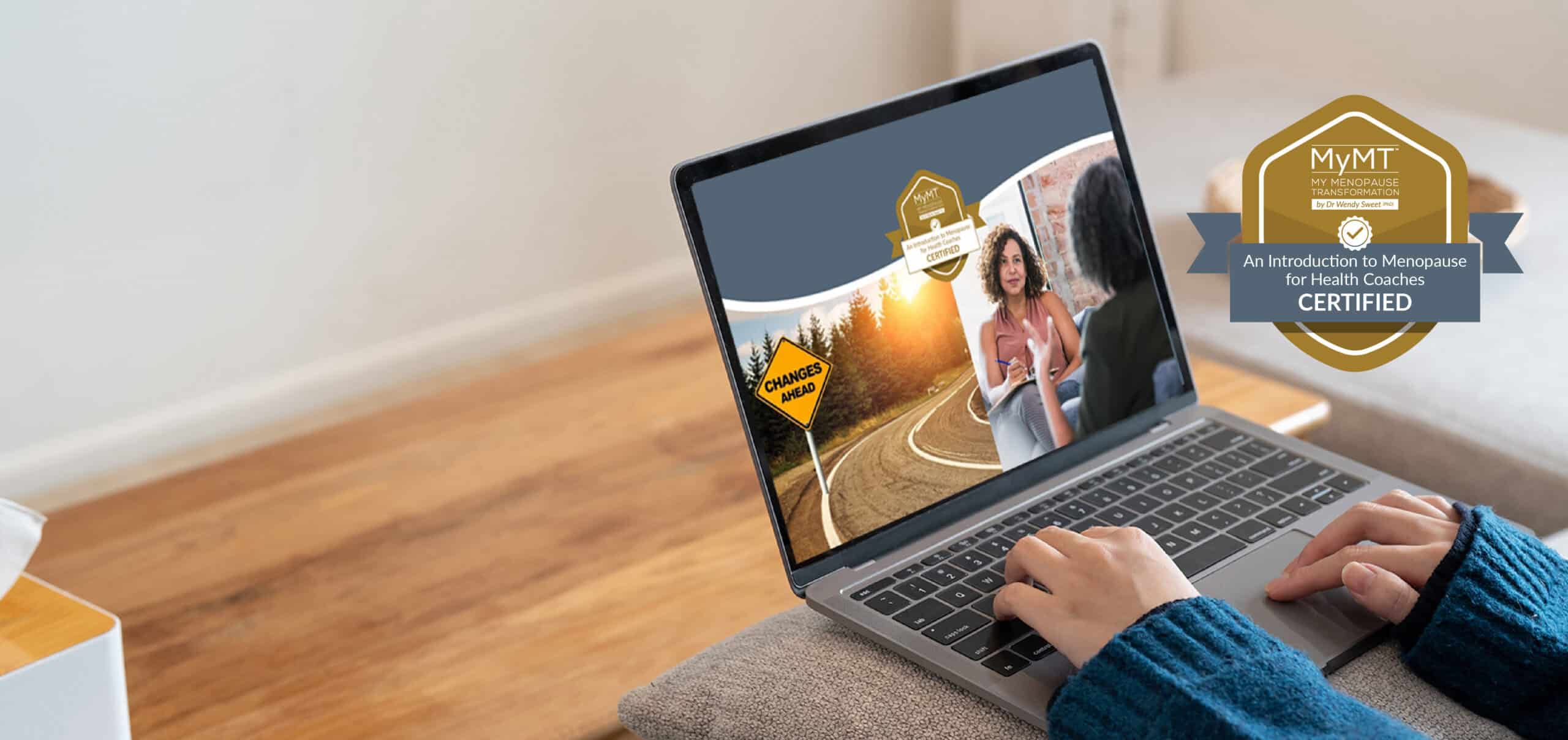‘Adopting healthy behaviors implies a multitude of challenges for individuals and unfortunately, medical advice and prescriptions do not guarantee lifestyle changes,’ mentions new research out of Spain, calling for a greater alliance between Clinicians and Health Professionals, especially when it comes to women’s exercise in the menopause transition and of course, exercise adherence. [Godoy-Izquierdo et al., 2024].
It’s an interesting perspective – a challenge for greater efforts to be made for collaboration between medical practitioners working with menopausal women and sport and exercise experts who are trained in lifestyle behaviour change. A perspective that I agree with.
Lifestyle change is an critical part of midlife health management and it tends to be forgotten about, with the main emphasis going on the medicalization of menopause. Whilst medications play an important role in the quality of life of women, the risk is that women believe that the medication will take care of all of their symptoms, to the detriment of lifestyle practices.
Whilst not specifically talking about menopause, a similar concern was outlined in the newly published White Paper titled ‘Towards a Healthier, Happier Britain’ (UKIHCA, 2024). Traditional medical advice and prescriptions, while well intentioned, often fall short in fostering lasting lifestyle changes, according to the report. This is where Health Coaches provide the bridge between Clinicians and health outcomes of their patients.
‘Health coaches are well-placed to support clinicians to turn the tide on the epidemic of chronic diseases and to offer lifestyle modification and health behaviour change as an evidence-based choice for patients. The expression of chronic and major health conditions like diabetes, heart disease, obesity, cancer and dementia are largely lifestyle driven and often preventable; the evidence for this is robust; (but) at what point does it become no longer ethical not to offer patients this choice?’ [UKIHCA, 2023]
The publication of these two pieces of research is important for all Health Professionals.
Not only do they bring attention to the vital role that Health Professionals and Health Coaches, including Exercise Professionals, can play in lifestyle behaviour change strategies, but the reports also bring attention to the need for alliances to be formed between Clinicians and trained Health Professionals. Especially, when it comes to the exercise and lifestyle needs of women in their menopause transition.
Is this an alliance that you can foster with local Clinicians in your community? And do you know what they expect of you, depending on your scope of practice?
Adopting an active lifestyle during and after menopause, is an important menopause symptom strategy for women to achieve, but it is equally important for Exercise and Health Professionals to understand the evidenced barriers to exercise that midlife women face.
These barriers often seem insurmountable to midlife women and numerous health behaviour studies report that many find that both initiating and maintaining active lifestyles can be challenging – especially during a time of their life when they feel exhausted and of course, time-poor.
This is why Exercise Professionals and Health Coaches need to address the barriers to exercise and activity participation in their counselling of women. Something that I go into in the certified MyMT™ Education Courses for Practitioners including the Introduction to Menopause for Health Coaches Course, and from these courses, I want to share some key strategies for you below.
Numerous health behaviour-change obstacles are faced by women every day. The most salient of course, is that they are time-poor.
Being pulled in all directions as they juggle work and home-life, caring commitments and other demands, means that addressing this aspect is possibly one of the most crucial for Health Coaches and Exercise Professionals to consider.
Behaviour-change research is consistent that common barriers for middle-aged women considering initiation of exercise include:
- lack of time,
- safety concerns about exercising outdoors, (including the weather), and,
- not having a family member or friend to exercise with. [McArthur et al, 2014]
- low self-efficacy
- physical and mental wellbeing challenges, e.g. sore joints, fatigue [McGuire et al, 2016]
In the UK alone, a 2020 Women in Sport survey suggests that 33% of women, aged 41 -60 yrs, are not getting the amount of recommended exercise (150 minutes per week), in order to benefit their health. As the lead author, Kate Nicholson (Head of Insight and Innovation for Women in Sport in the UK) mentions,
‘To find relevant solutions, we do not just need to examine barriers to sport and exercise, but must start by understanding women’s broader lives.’
Given the importance of managing these behavioural factors, it becomes crucial to design and implement exercise and physical activity programs specifically tailored for middle-aged women – an approach which must also take into consideration the psychosocial, cultural and biomedical factors, that influence the initiation and adherence to women’s activity behaviours.

What Lessons can Health Coaches and Exercise Professionals take from the ‘Active Women Over 50’ Trial?
The Active Women over 50 trial was designed by researchers at the Institute for Musculoskeletal Health, in Sydney, Australia. It’s aim was to test a scalable program for increasing physical activity among women aged 50+.
The research program included information on exercise, an activity tracker and email support. The main purpose of the study was to seek participant perspectives of the program, allowing broader understanding of the experiences of women in midlife and how these might inform physical activity interventions specific to this demographic. [Wallbank et al, 2022]
There were a number of themes which emerged, including:
- Age and gender demands on their time.
- A perception that they were invisible when it came to gyms and inclusion of their needs in menopause and/ or as older women.
- Bodily constraints and body concerns, i.e. concerns about their changing body and therefore, how they were perceived by exercise professionals. As well, the fact that they had reached an age, where activity was important to their health.
- Social connection matters – therefore, there is a need to provide opportunities for women to interact with others. [Wallbank et al, 2022]
Interestingly, many of the main themes in this study, had similarities to my own doctoral studies, with regard to the experiences of women with their activity participation in midlife.
Of note, was the feeling that exercise was a priority for them, but many felt that the emphasis on activities such as Masters sports, were very competitive, and fitness environments with scheduled classes and an emphasis on high intensity workouts, didn’t meet their needs. [Sweet, 2018].
I’ve taken learnings from these studies, including my own, as well as a number of others and placed these into the MyMT™ Education courses for you. From weight loss to behaviour change, understanding that women in their menopause transition are uniquely placed to consider the role of exercise in their lives, is an important coaching strategy that we need to pay attention to.
Not all of you have exercise prescription in your Scope of Practice, obviously, but as we encourage women towards their healthy ageing, then the role of exercise and physical activity matters.
And yes, these terms differ! Back in 1985, Casperson and colleagues, propsed that the terms “Physical activity,” “Exercise,” and “Physical Fitness” were terms that describe different concepts. However, they are often confused with one another, or the terms are used interchangeably. So, just as a reminder to you, here are the definitions:
Physical activity is defined as any bodily movement produced by skeletal muscles that results in energy expenditure. The energy expenditure can be measured in kilocalories. Physical activity in daily life can be categorized into occupational, sports, conditioning, household, or other activities. Today, this term incorporates ‘Incidental activity‘ which refers to activity performed as part of everyday living, e.g. climbing the stairs. Moderate physical activity has health benefits too.
Exercise is a subset of physical activity that is planned, structured, and repetitive and has as a final or an intermediate objective the improvement or maintenance of physical fitness. Physical fitness is a set of attributes that are either health- or skill-related. The degree to which people have these attributes can be measured with specific tests.
As we remind women that menopause is a time to either get or stay active, it’s an important differentiation to make. Many are exhausted, simply because they are getting physical activity in their work roles, and trying to exercise on top of an already, physically demanding lifestyle. Tineke, in the banner below, was the same.

References:
McArthur, D., Dumas, A., Woodend, K. et al. Factors influencing adherence to regular exercise in middle-aged women: a qualitative study to inform clinical practice. BMC Women’s Health 14, 49 (2014). https://doi.org/10.1186/1472-6874-14-49
McGuire, A., Seib, C., Anderson, D., (2016). Factors predicting barriers to exercise in midlife Australian women. Maturitas, 87, 61-66.
D. Godoy-Izquierdo, C. de Teresa and N. Mendoza, Exercise
for peri- and postmenopausal women: Recommendations from synergistic alliances of women’s medicine and health psychology for the promotion of an active lifestyle, (2023), https://doi.org/10.1016/j.maturitas.2024.107924
Sweet, W. (2018). It’s personal and it’s professional: The meanings women Baby-boomers attribute to their ageing and ‘working-out’ with a Personal Trainer. New Zealand: University of Waikato
Towards a Healthier, Happier Britain: The Case for Health Coaching. (2024)
UK & International Health Coaching Association
Wallbank G, Haynes A, Tiedemann A, Sherrington C, Grunseit AC. Designing physical activity interventions for women aged 50+: a qualitative study of participant perspectives. BMC Public Health. 2022 Oct 4;22(1):1855. doi: 10.1186/s12889-022-14237-y.
Women in Sport Publication (2021). Inspiring women to be active during midlife menopause. [Downloaded from: https://womeninsport.org/]


